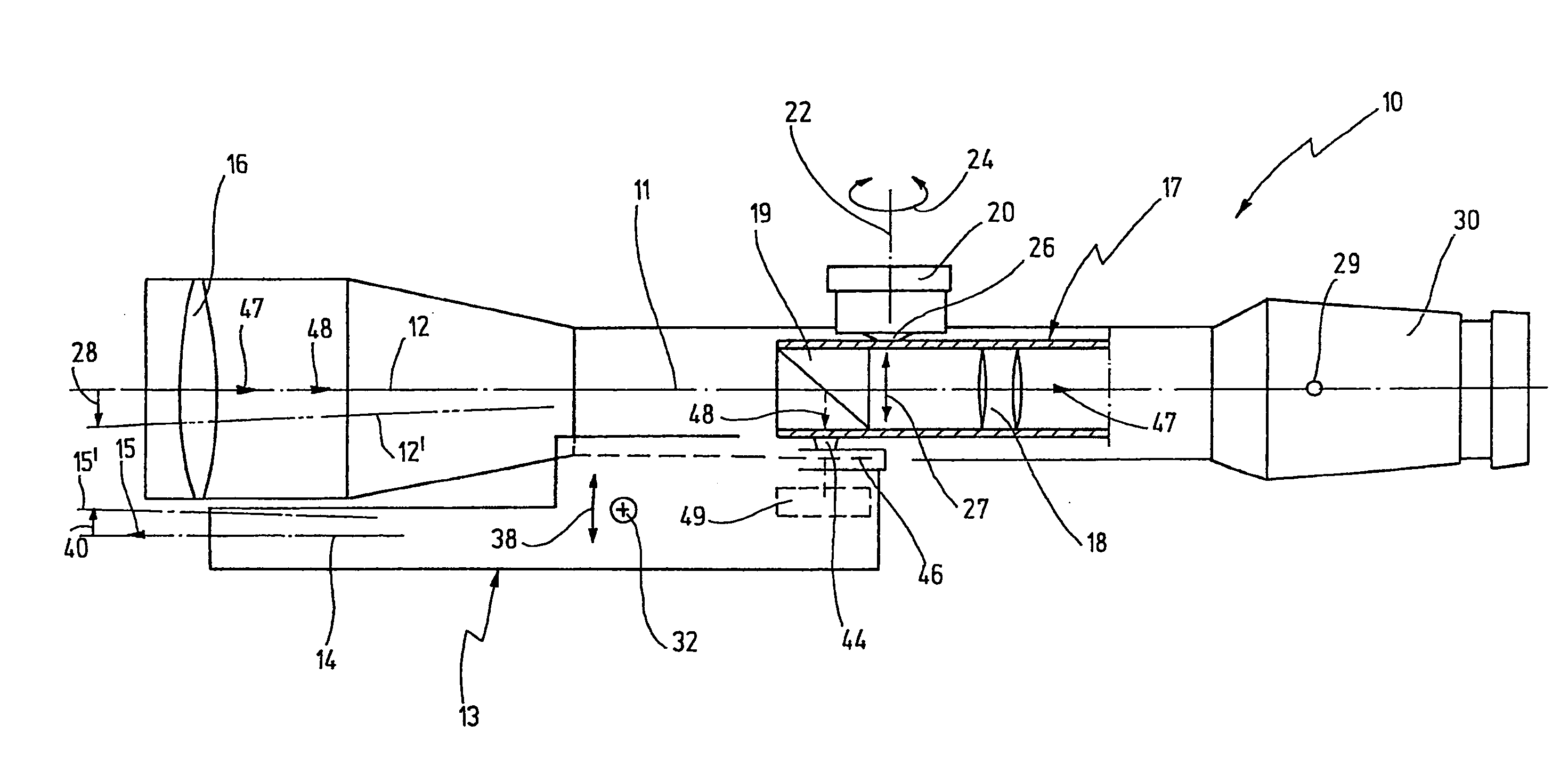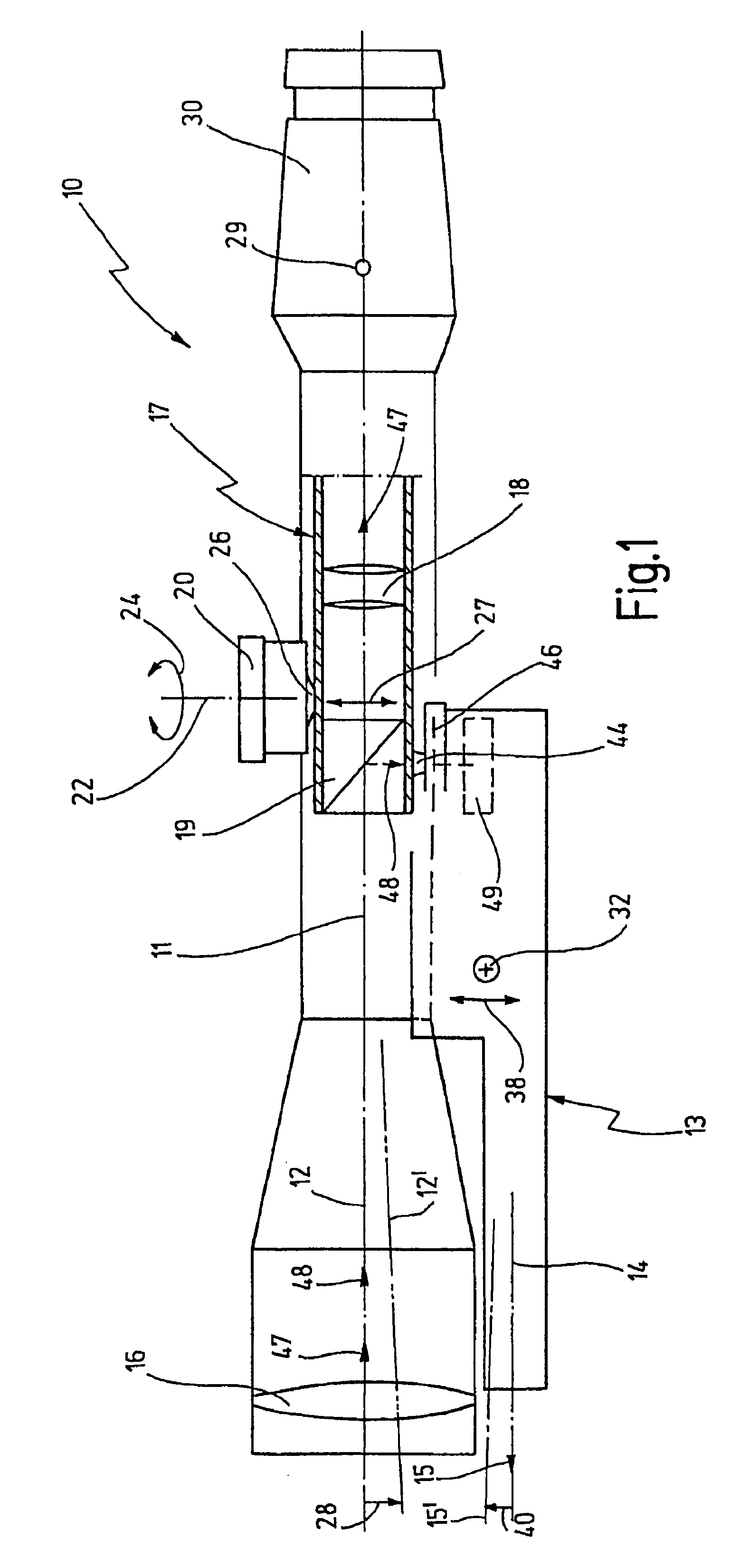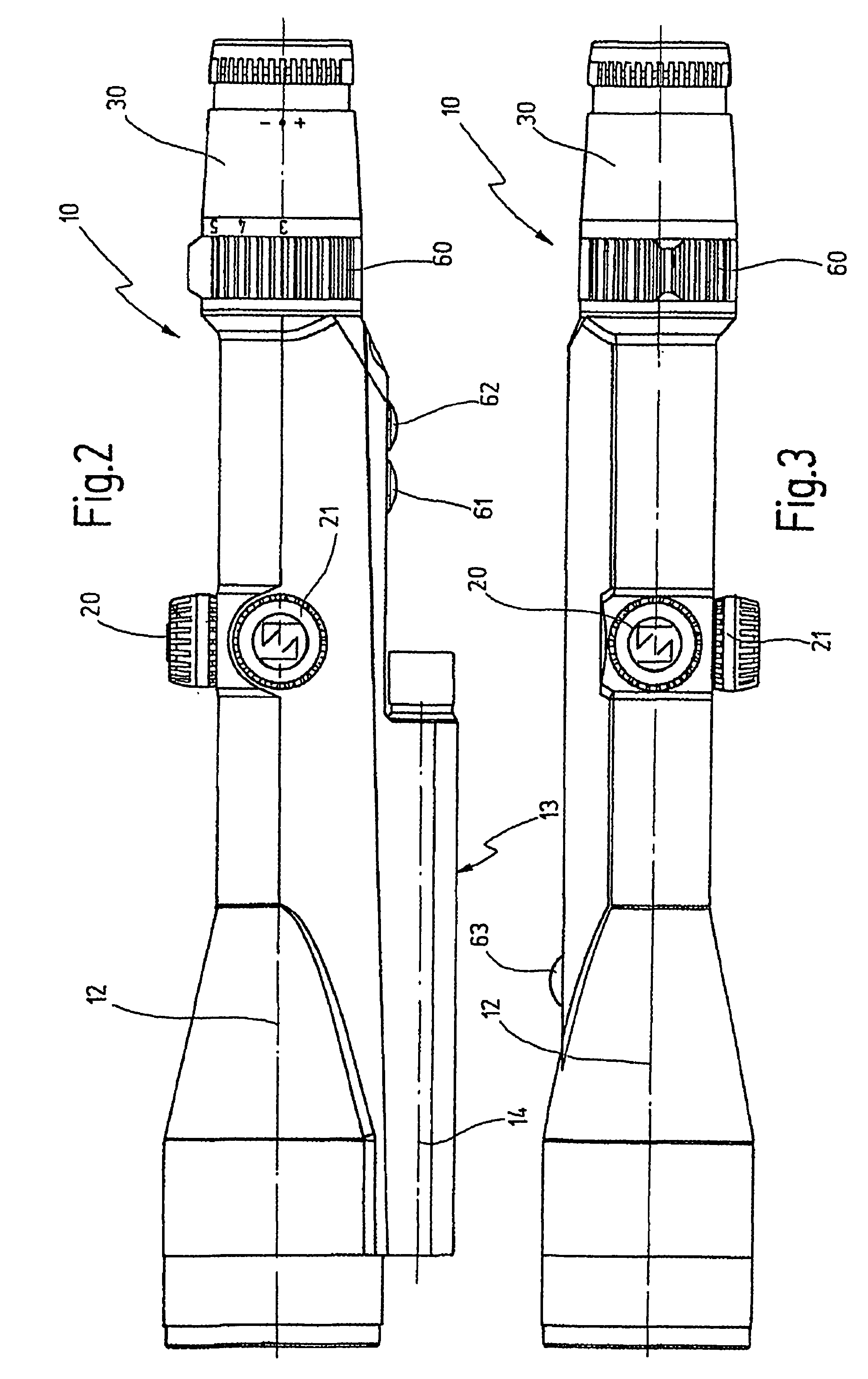Aiming telescope having a range finder
a telescope and range finder technology, applied in the field of aiming telescopes, can solve the problems of loss of range, reflection of the emitted laser beam at the objective lens, and loss of parallel or the coinciding line of sight and of the laser beam, and achieve the effects of compact design, low weight and high precision
- Summary
- Abstract
- Description
- Claims
- Application Information
AI Technical Summary
Benefits of technology
Problems solved by technology
Method used
Image
Examples
Embodiment Construction
[0119]In FIG. 1 reference numeral 10 as a whole designates an aiming telescope. The aiming telescope 10 has an optical axis 11. A line of sight 12 of the aiming telescope 10 coincides with the optical axis 11 in the basic operational position of the aiming telescope 10.
[0120]A range finder 13, in particular a laser range finder, is mounted to the aiming telescope 10. The range finder 13 has a longitudinal axis 14 and is mounted to the aiming telescope 10 such that an emitted measuring beam 15 emanating from the range finder 13 along the longitudinal axis 14 is normally parallel to the optical axis 11 and, hence, also parallel to the line of sight 12. Thereby the emitted measuring beam 15 impinges on the target exactly at the point lying on the line of sight 12.
[0121]An inner tube 17 being adapted to be pivoted relative to the optical axis 11 is arranged within the aiming telescope 10 on the side opposite to an objective lens 16. The inner tube 17 is adapted to be pivoted with its ob...
PUM
 Login to View More
Login to View More Abstract
Description
Claims
Application Information
 Login to View More
Login to View More - R&D
- Intellectual Property
- Life Sciences
- Materials
- Tech Scout
- Unparalleled Data Quality
- Higher Quality Content
- 60% Fewer Hallucinations
Browse by: Latest US Patents, China's latest patents, Technical Efficacy Thesaurus, Application Domain, Technology Topic, Popular Technical Reports.
© 2025 PatSnap. All rights reserved.Legal|Privacy policy|Modern Slavery Act Transparency Statement|Sitemap|About US| Contact US: help@patsnap.com



